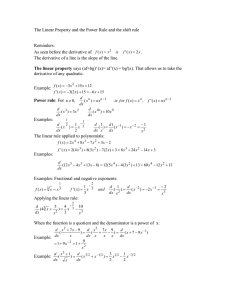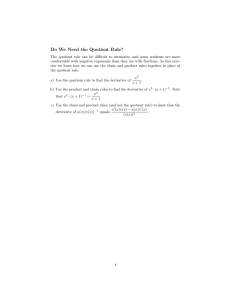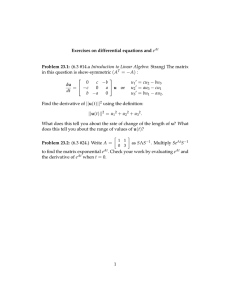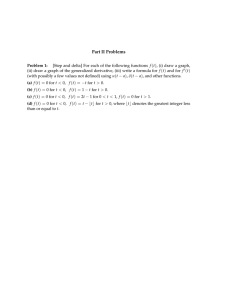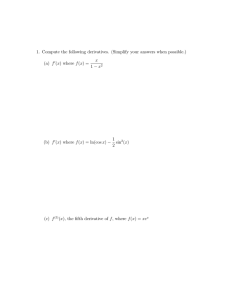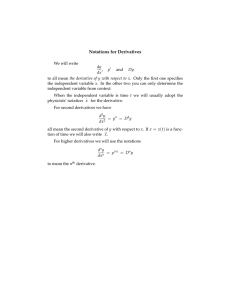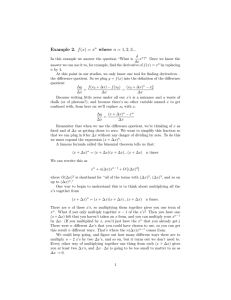Example: Reciprocals
advertisement
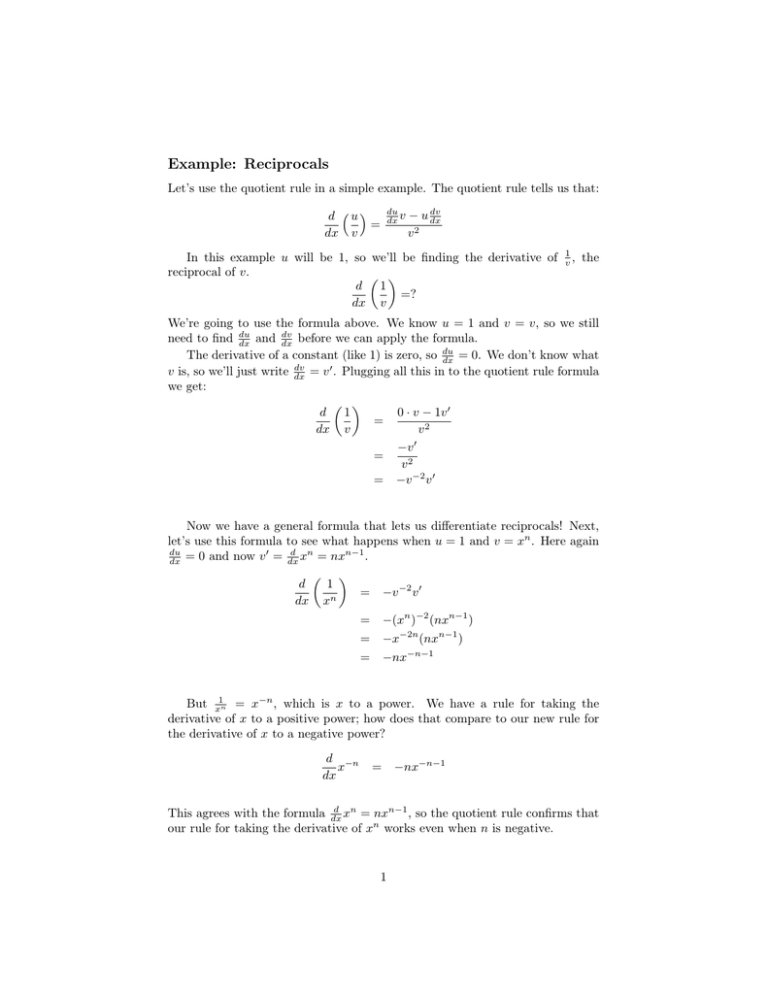
Example: Reciprocals Let’s use the quotient rule in a simple example. The quotient rule tells us that: du dx v d �u� = dx v dv − u dx v2 In this example u will be 1, so we’ll be finding the derivative of reciprocal of v. � � d 1 =? dx v 1 v, the We’re going to use the formula above. We know u = 1 and v = v, so we still dv need to find du dx and dx before we can apply the formula. The derivative of a constant (like 1) is zero, so du dx = 0. We don’t know what dv v is, so we’ll just write dx = v � . Plugging all this in to the quotient rule formula we get: � � d 1 0 · v − 1v � = dx v v2 −v � = v2 = −v −2 v � Now we have a general formula that lets us differentiate reciprocals! Next, let’s use this formula to see what happens when u = 1 and v = xn . Here again du d n � n−1 . dx = 0 and now v = dx x = nx � � d 1 = −v −2 v � dx xn = −(xn )−2 (nxn−1 ) = −x−2n (nxn−1 ) = −nx−n−1 But x1n = x−n , which is x to a power. We have a rule for taking the derivative of x to a positive power; how does that compare to our new rule for the derivative of x to a negative power? d −n x dx = −nx−n−1 d n This agrees with the formula dx x = nxn−1 , so the quotient rule confirms that our rule for taking the derivative of xn works even when n is negative. 1 MIT OpenCourseWare http://ocw.mit.edu 18.01SC Single Variable Calculus�� Fall 2010 �� For information about citing these materials or our Terms of Use, visit: http://ocw.mit.edu/terms.
